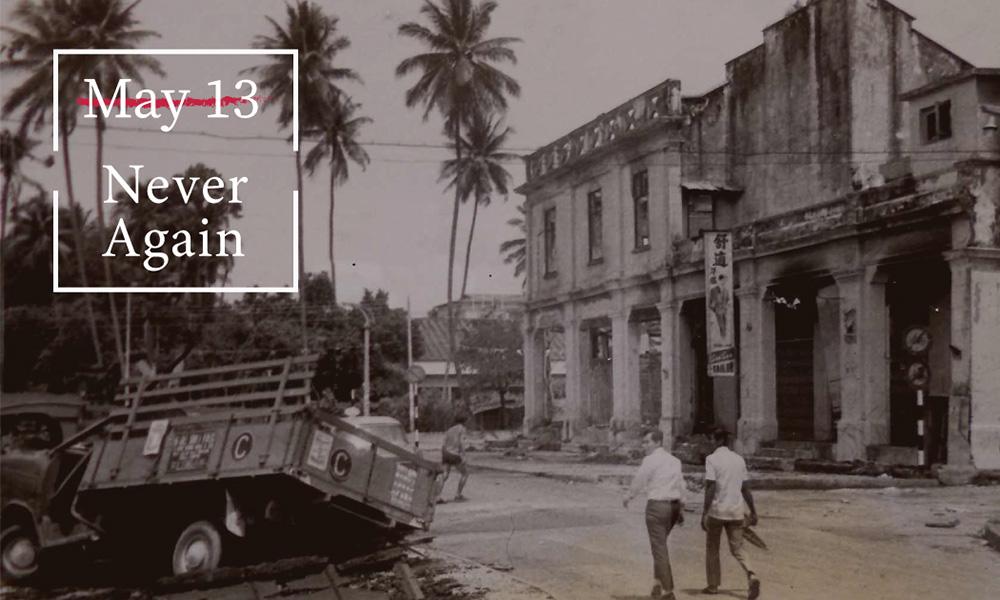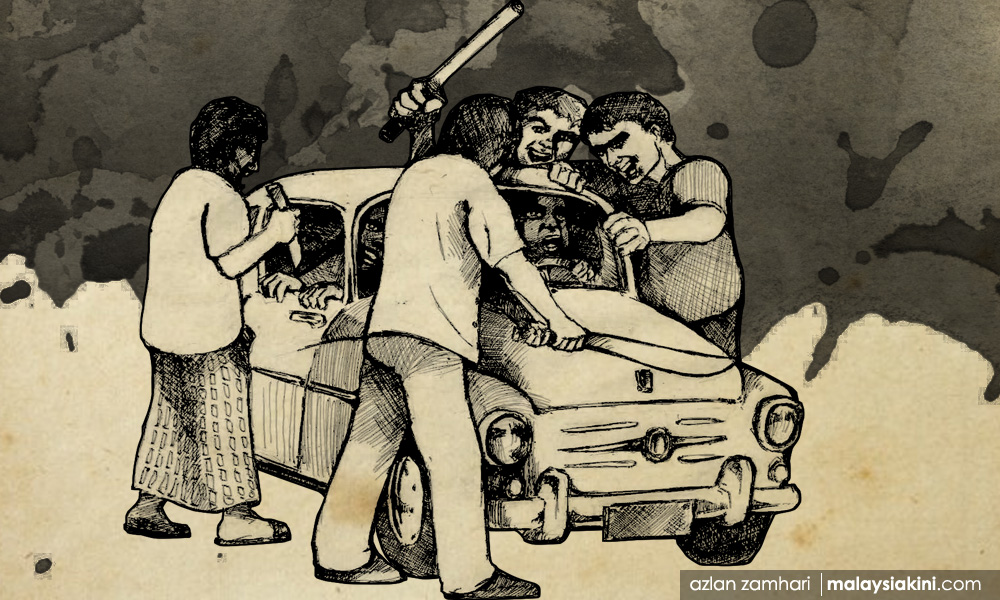Do you believe in ghosts? Why is it that wherever our feet touch as we roam the earth of this land, we are surrounded by these so-called spirits, who are seemingly ever-present in our oldest schools, hospitals and along our lonely banyan tree-lined streets?
In recent days, warnings of a possible repeat of the deadly May 13, 1969 race riots have been circulating the interwebs, galvanising fear among the masses for the benefit of an elite few.
These prophets of doom who stoke the flame by playing up these narratives of mayhem and destruction, unfortunately, come wholly unsurprising to this writer, right after the depressingly regressive polling day results - with Islamist party PAS now standing as the biggest party in Parliament, albeit as part of the Perikatan Nasional bloc which came in second in GE15.
The same goes for the genuine fear felt by those on the receiving end. In truth, despite the advent of the internet, so much that we know about the riots is mired in emotion and trauma that it is hard for the vast majority to look back on the date painlessly and see through the spin.
We also know that when grappled by a crisis of “faith”, delusions of “ghosts” are ever so helpful to explain difficult situations - that much is made clear in French philosopher Jacques Derrida’s theory of “hauntology”.
Hauntology explores the notion that the present is “haunted” by metaphorical “ghosts” of lost futures - a theory often linked to the opening lines of Karl Marx’s Communist Manifesto: “A spectre is haunting Europe - the spectre of communism.”
Likewise, it would not be a stretch to point out that the spectre of violence brought on by the May 13 riots still haunts Malaysia.
A nation in its teething years
In 1969, Malaysia was a nation in its teething years, facing both communist insurgency and fragile race relations. Much of the communal distrust was facilitated by the Japanese occupation and British rule, before our Independence in 1957.
If one pays close attention, it is hard to miss that we have had a fair few racial flare-ups in our history. This includes Singapore’s own 1964 racial riots (before its separation from Malaysia) among others.
It is claimed in official reports that in total, 196 people were killed on May 13, 1969. However, this figure is disputed by many witnesses and researchers alike.

I must admit, this particular wound (May 13) in our country’s history is not one that has directly affected my own family history. My father, then 25, was working as an agriculture officer in the relative safety of the then-jungles of Parit, Perak, and my mother was five years old in Kuching, Sarawak - both miles away from the hotbed of activity taking place in Kuala Lumpur on that ill-fated day.
Yet, May 13 undeniably triggers a primal fear in the Malaysian psyche, with many firmly holding the belief that it should be left untouched for the sake of the nation’s stability. Because of this, it is important to recognise the damage its narrative has done to our country thus far.
I won’t get into the nitty-gritty details of May 13 here, when much has already been said in history books and resource sites, such as Malaysiakini’s own ‘May 13, never again’ - a Kini News Lab retrospective report, published in conjunction with the 50th anniversary of the event, led by Tham Seen Hau and Aidila Razak.

Ghost stories
As far as Malaysian ghost stories go, this particular incident has been a tale that has been recycled and reused - often in insidious fashion - over the past 50 years, still being pulled out of the closet for times like these when much is up in the air politically.
It is for this reason that the book ‘Life After: Oral Histories of the May 13 Incident’ feels even more relevant today. Tham, who leads the KiniTV team, was part of the core team that had compiled the oral tales, interviewing those willing to speak up.
The book features interviews, painstakingly amassed over several years and contents, with the kin of the deceased, historians, government officials, witnesses on the ground and so on.
The May 13 Oral History Group, the main driver of the book’s existence, acknowledges that political violence often goes hand-in-hand with the nation-building years of many of Malaysia’s then post-Independence peers.
Take, for instance, the 1947 Partition in South Asia, the Mau Mau rebellion of the 1950s in Kenya (then still a British colony) and the 1965 massacre in Indonesia, to name a few.
“Political violence has bedevilled much of the post-colonial world, but not always to the same degree or in the same manner. Academic interrogation should clarify, not magnify.
“The recovery of memory in the stories it would seek to uncover should be stepping stones on the arduous road to reconciliation, not weapons of war fabricated for the next battle,” says Diana Wong in the book’s foreword.

The collective’s interest in studying the May 13 clashes came about unexpectedly. It had been studying the Sungai Buloh leper colony when, in the course of their research, they learnt that a handful of victims taken by the riots were laid to rest in the area.
Comprising 20 stories from eyewitnesses of various backgrounds, it comes together surprisingly well as a remembrance of those who suffered a “senseless death at the hands of the mob” who should be seen as victims of the nation.
“They deserve to be remembered and honoured as such,” said Wong, again in the foreword.
Much of the eyewitness accounts, still carrying the weight of losing loved ones and seeing so much death in one’s lifetime, can make it hard to sift through on a casual read due to the stories’ descriptive nature. However, but in sharing the pain, we may better understand our cause to push back against narratives of bringing back the May 13-esque riots to the present day.
With tales of pregnant women sliced open, spilling guts and foetuses at a local cinema, the sickly stink of burning flesh - it speaks of a much more gruesome chapter in our history that I hope we never return to. Reject, and never forget.
ALENA NADIA is a member of the Malaysiakini Team. - Mkini



No comments:
Post a Comment
Note: Only a member of this blog may post a comment.